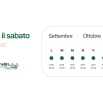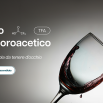ENOLOGIA
TFA - TRIFLUOROACETIC ACID: AN EMERGING CONTAMINANT IN WINE
Trifluoroacetic acid (TFA) is a chemical resulting from the degradation of several molecules, particularly those belonging to the PFAS family (per- and polyfluoroalkyl substances). Other sources of TFA include fluorinated refrigerant gases (F-gases), including hydrochlorofluorocarbons (HCFCs) and hydrofluorocarbons (HFCs), fluoropolymers such as Teflon, and fluorinated pesticides, 15 of which are authorized in Italy for use on wine grapes.
Characteristics and prevalence of TFA
TFA, due to its chemical properties, is present almost everywhere: it is in fact an ultra-short molecule, strongly hydrophilic, mobile and highly persistent in the environment. Unlike other PFASs, TFA is more difficult to remove by standard treatments; in fact, while nanofiltration can significantly reduce longer-chain PFASs, effective removal of TFA requires reverse osmosis filtration.
Recent studies and contamination in wine
The study “Message from the Bottle - The Rapid Rise of TFA Contamination Across the EU” documented a significant increase in TFA levels in European wines from the 1990s to the present, with some Austrian samples showing concentrations above 300 µg/L (0.3 mg/L).
At low concentrations, TFA levels are similar in wines from conventional and organic cultivation. However, for higher concentrations, TFA was generally more present in conventional wines, suggesting that, in addition to pesticides used exclusively in conventional agriculture, there are additional sources of contamination common to both cropping patterns.
The low presence of TFA in raw materials (fruits and vegetables) compared to the high concentration in derived products (juices, wine, etc.) indicates that significant contamination could occur during processing of the raw material, possibly due to contact with fluoropolymers.
Regulations and safety limits
Currently, no specific limit for TFA in food or drinking water is established in Europe. However, European authorities are considering limits, especially for water, because of the increasing prevalence and persistence of this molecule.
EFSA indicates a daily intake limit of 50 µg/kg body weight, but other bodies report much lower reference values.
Vassanelli Lab's R&D
Vassanelli Lab's R&D department has implemented and accredited an analytical method based on highly sensitive LC-MS/MS technique for the detection of TFA in wine. The limit of quantification (LoQ) achieved is 0.01 mg/L (10 µg/L), allowing accurate and reliable assessment of the presence of this substance.
For more information or to request analysis of TFA in your wine, contact our laboratory






